How to Choose the Right Industrial Gas-Fired Steam Boiler
Selecting an inappropriate gas-fired steam boiler can result in unstable steam supply, excessive fuel consumption, higher emissions, and frequent maintenance issues. Since gas-fired boilers are widely used in food processing, pharmaceuticals, textiles, chemicals, and power generation, choosing the right model is critical for efficiency, compliance, and long-term reliability.
To choose the right industrial gas-fired steam boiler, you must determine the required steam capacity and pressure, assess available gas supply pressure and quality, select between fire-tube and water-tube designs, consider efficiency-enhancing options such as economizers and condensers, ensure compliance with emission standards, and evaluate automation, safety, and maintenance requirements. Site-specific conditions such as installation space, altitude, and water quality must also be taken into account.
The right choice ensures lower operating costs, stable steam output, and regulatory compliance over the boiler’s service life.

How Do You Determine the Correct Steam Capacity and Working Pressure for Your Process?
One of the most difficult but critical decisions in boiler design is determining the correct steam capacity and working pressure for a given process. The pain point lies in underestimating or oversizing: a boiler that is too small creates production bottlenecks and costly downtime, while oversizing increases fuel consumption, operating inefficiency, and capital cost. Both mistakes can lead to long-term financial and operational consequences. The solution is a systematic approach that balances steam demand, process variability, pressure requirements, and safety margins to optimize boiler performance.
The correct steam capacity and working pressure for your process are determined by calculating the total connected load of all steam-consuming equipment, applying a diversity factor to account for simultaneous demand, and adding a safety margin (typically 10–20%). Working pressure is set based on the highest pressure requirement of process equipment plus an allowance for distribution losses. This ensures reliable steam supply without oversizing, maximizing efficiency and reducing operating costs.
The importance of accurate sizing cannot be overstated: it is the foundation of boiler design and directly affects fuel bills, maintenance, and long-term plant reliability. A professional steam load assessment prevents costly mistakes and enables selection of the most efficient boiler type for your operation.
The highest possible boiler pressure should always be chosen to ensure safety.False
Boiler pressure should be matched to process requirements with a small margin; unnecessarily high pressure increases capital cost, auxiliary equipment needs, and reduces efficiency.
Adding a 10–20% margin to calculated steam demand is standard practice to ensure stable operation.True
Safety margins account for fluctuations in demand and help prevent frequent cycling or steam shortages.
Step-by-Step Method for Determining Steam Capacity and Pressure
List All Steam Users – Identify equipment such as turbines, heat exchangers, sterilizers, process vessels, HVAC, and auxiliary systems.
Calculate Individual Loads – Obtain manufacturer data for steam consumption (kg/h or lb/h) or use heat balance calculations.
Apply Diversity Factor – Not all users run at full load simultaneously; a factor (0.6–0.9) adjusts for realistic peak demand.
Add Safety Margin – Typically 10–20% above maximum load to cover future expansion and demand fluctuations.
Determine Required Pressure – Based on the highest equipment requirement, add 1–2 bar for line losses and control stability.
Check Boiler Turndown Ratio – Ensure boiler can handle minimum load without inefficiency or cycling.
Example: Food Processing Plant
| Steam User | Load (kg/h) | Operating Factor | Effective Load (kg/h) |
|---|---|---|---|
| Pasteurizer Heat Exchanger | 3,500 | 0.8 | 2,800 |
| Sterilizer Units (x2) | 2,000 each | 0.5 | 2,000 |
| Cleaning-In-Place (CIP) System | 1,200 | 0.6 | 720 |
| HVAC Humidifiers | 800 | 0.5 | 400 |
| Total Effective Load | — | — | 5,920 kg/h |
Final Capacity Selection:
Total effective load = 5,920 kg/h
Safety margin (15%) = +888 kg/h
Boiler rating required = ~6,800 kg/h (≈7 TPH)
Pressure Selection:
Sterilizer requires 8 bar(g), distribution losses = 1 bar
Boiler working pressure = 9–10 bar(g)
Boiler Pressure vs. Application Table
| Process Application | Typical Steam Pressure Range |
|---|---|
| Textile Drying & Heating | 4–8 bar |
| Food Processing (sterilizers, cooking) | 6–12 bar |
| Chemical & Pharmaceutical | 10–20 bar |
| Paper & Pulp | 10–30 bar |
| Power Generation (Utility) | 60–180+ bar |
Engineering Insights
Oversizing Risk: A 20% oversized boiler can waste 8–12% extra fuel annually due to poor part-load efficiency.
Turndown Ratio: For variable demand plants, a higher turndown ratio (8:1 or 10:1 in gas boilers) reduces cycling losses.
Future Proofing: Where expansion is expected, a modular multi-boiler system often outperforms one large unit.
Pressure Matching: Avoid over-specifying pressure. Running a 20 bar boiler for a 6 bar process is inefficient and raises auxiliary equipment cost.
Case Study – Pharmaceutical Plant
A European pharmaceutical plant initially considered a 15 TPH boiler at 20 bar. A detailed steam audit revealed actual demand averaged 9 TPH with occasional peaks to 12 TPH. The optimized design specified a 2 x 7 TPH water-tube boiler system at 12 bar, enabling redundancy, higher efficiency, and a 15% CAPEX saving, with annual fuel savings of $180,000.
Conclusion
Determining the correct steam capacity and working pressure is not guesswork—it requires a systematic steam audit, diversity factor application, and careful allowance for process needs and distribution. The result is a boiler system that is reliable, efficient, and cost-effective for decades of operation.
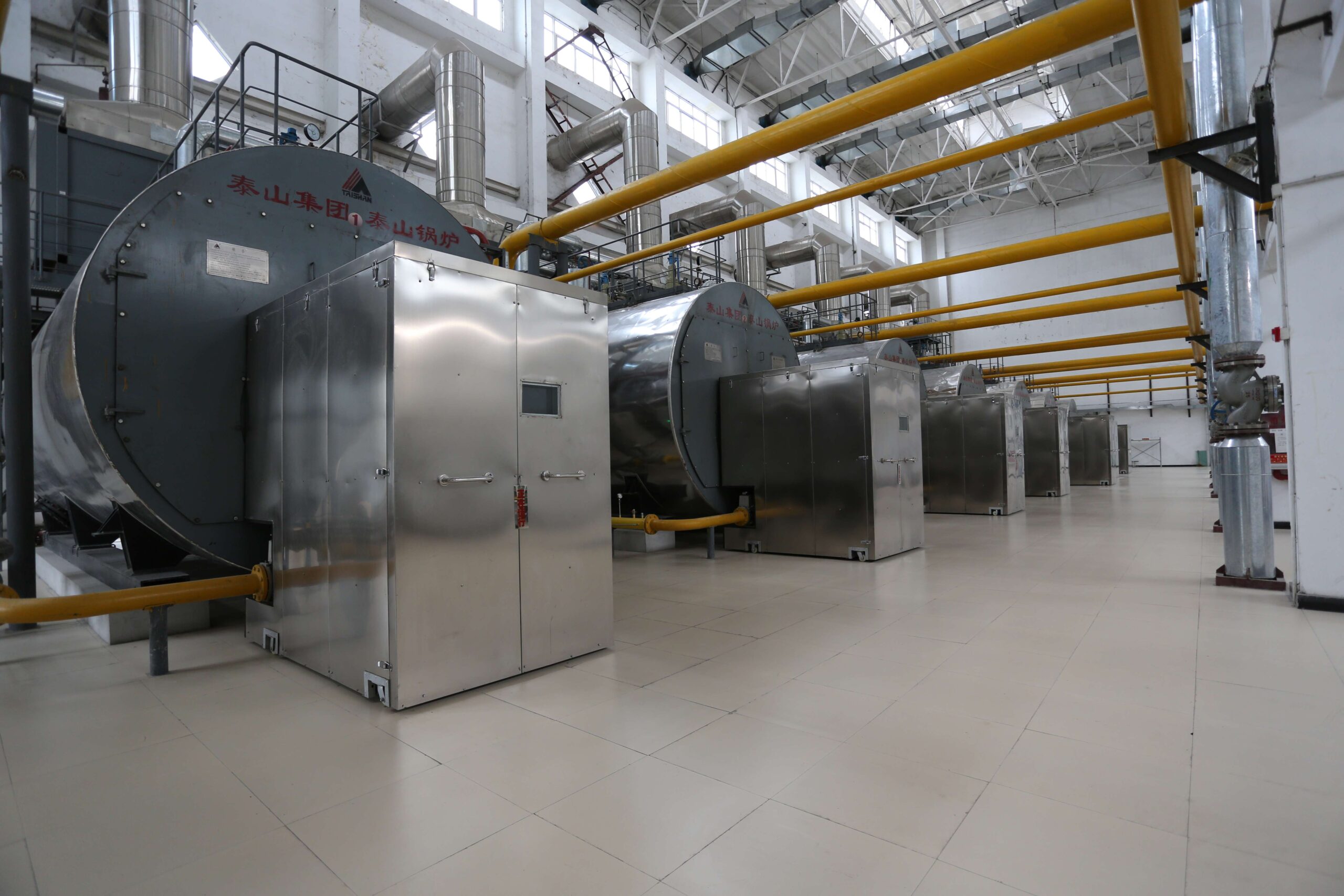
How Do Gas Supply Conditions (Pressure, Calorific Value, Availability) Influence Boiler Selection?
One of the most overlooked yet critical aspects in boiler selection is the condition of the gas supply. Many operators face the pain point of choosing a boiler that cannot operate properly with the available fuel pressure or calorific value. This leads to unstable combustion, derated capacity, higher emissions, and costly retrofits. In extreme cases, boilers may even trip or fail to operate at all. The solution is to carefully evaluate gas pressure, calorific value, and long-term availability before finalizing boiler specifications.
Gas supply conditions directly influence boiler design and performance. Adequate inlet pressure ensures stable burner operation, calorific value determines boiler firing rate and heat input, and fuel availability dictates long-term operating cost and reliability. Low pressure may require booster compressors, variable calorific gas may need dual-fuel or flexible burners, and unreliable availability may necessitate backup fuel systems. Correctly matching boiler design to gas supply conditions prevents inefficiency, unplanned downtime, and compliance risks.
A professional fuel supply assessment during the design phase avoids costly mistakes and ensures long-term operational security.
All natural gas supplies have uniform calorific values, so any gas-fired boiler can run efficiently without adjustment.False
Natural gas composition varies by region; calorific value differences require burner tuning or special design for stable performance.
Low gas inlet pressure can cause poor combustion and flame instability in boilers.True
Gas burners require stable pressure within the design range; inadequate pressure may cause incomplete combustion and safety issues.
Key Gas Supply Factors Affecting Boiler Selection
1. Gas Pressure
Why it matters: Boiler burners are designed to operate within a specific gas pressure range (typically 2–6 bar for industrial burners).
Low pressure issues: Flame instability, reduced efficiency, incomplete combustion.
Solution: Install gas booster compressors or select burners designed for low-pressure operation.
2. Calorific Value (CV)
Definition: The energy content of fuel, usually expressed as MJ/Nm³ or kcal/Nm³.
Impact on boilers: Lower CV gas requires higher volume flow to meet the same steam output.
Solution: Select burners with wide turndown and adaptive combustion controls to handle gas quality variations.
3. Availability & Reliability
Issue: Seasonal shortages, supply interruptions, or weak distribution networks can disrupt operations.
Solution: Incorporate dual-fuel capability (natural gas + diesel/oil) for backup or consider on-site gas storage (LNG or CNG).
Comparative Gas Supply Scenarios
| Parameter | Case A: High Pressure, High CV Gas | Case B: Low Pressure, Low CV Gas | Case C: Unstable Supply |
|---|---|---|---|
| Pressure | 4–6 bar | 0.5–1 bar | 3–5 bar fluctuating |
| Calorific Value | 39 MJ/Nm³ | 28 MJ/Nm³ | 35–40 MJ/Nm³ variable |
| Boiler Adaptation Needed | Standard industrial burner | Booster + flexible burner | Dual-fuel + control tuning |
| CAPEX Impact | Low | Medium–High | High (backup system needed) |
| Risk Level | Low | Medium | High |
Engineering Considerations
Burner Flexibility: Modern low-NOx burners can adapt to wider CV ranges, reducing efficiency loss.
Gas Flow Measurement: Install flow meters and calorimeters to continuously monitor fuel quality.
Emissions Impact: Poor combustion due to low pressure or low CV gas increases CO, NOx, and unburned hydrocarbons.
Safety Margins: Always include a 10–15% gas supply margin in design to account for fluctuations.
Case Study – Cement Plant Boiler
A cement plant in South Asia was supplied with pipeline natural gas of highly variable calorific value (30–40 MJ/Nm³). Initially, standard burners caused flameouts and unstable steam generation. After retrofitting flexible dual-fuel burners with oxygen trim controls, efficiency improved by 7%, downtime reduced by 60%, and the plant avoided $200,000/year in lost production.
Boiler Selection Guide Based on Gas Supply
| Gas Supply Condition | Recommended Boiler/Burner Choice |
|---|---|
| Stable high-pressure natural gas | Fire-tube or water-tube with standard burner |
| Low-pressure supply | Boiler with gas booster and staged burners |
| Variable calorific value gas | Water-tube with adaptive combustion controls |
| Unreliable pipeline gas | Dual-fuel boiler with oil/diesel backup |
| Remote site with no pipeline | LNG or CNG-fired packaged boiler |
Conclusion
Gas supply conditions are not an afterthought—they are fundamental to boiler performance, safety, and lifecycle cost. Correctly aligning boiler design with gas pressure, calorific value, and availability ensures efficiency, stability, and resilience against supply disruptions.
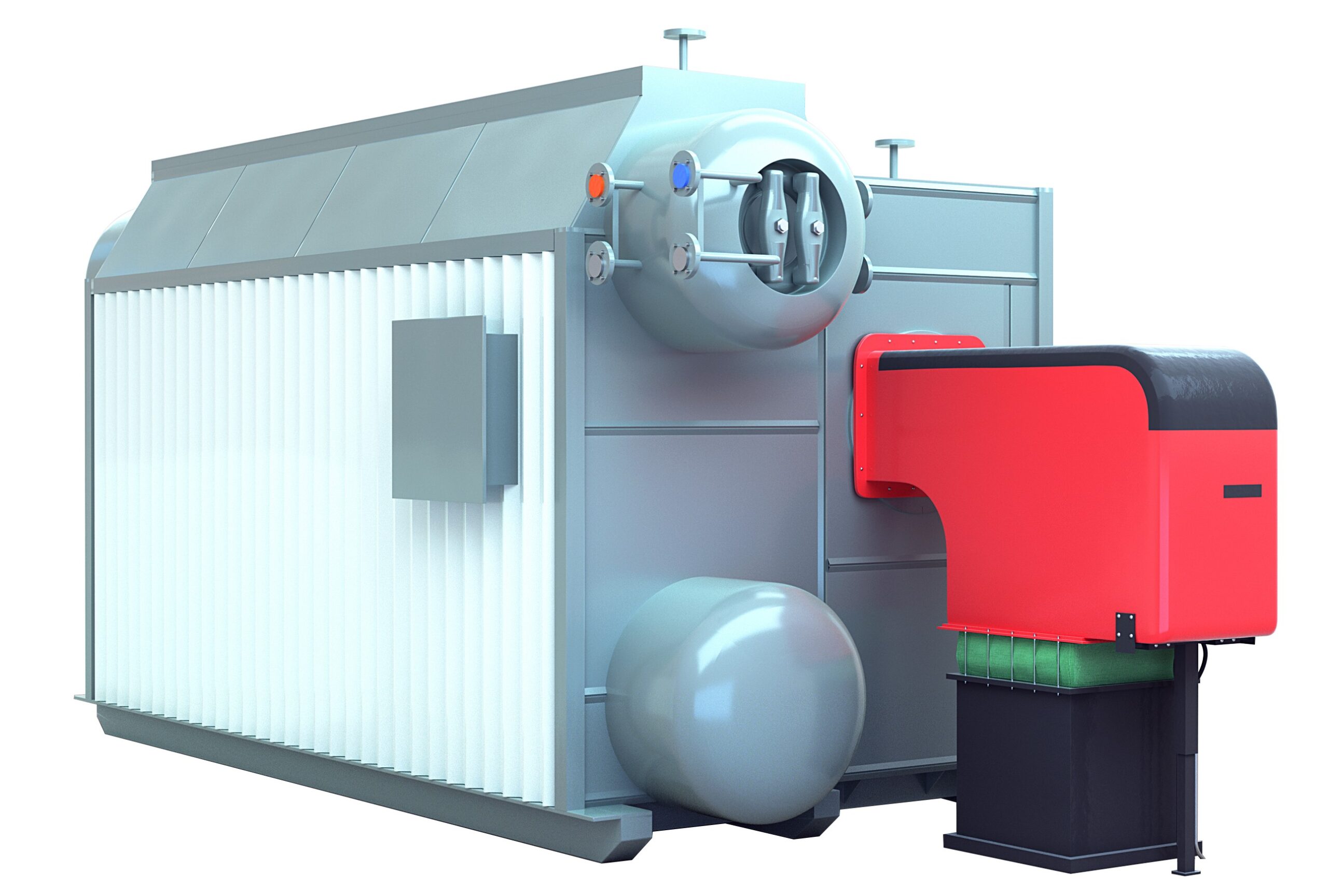
What Efficiency-Boosting Options (Economizers, Condensers, Advanced Controls) Are Available for Gas-Fired Boilers?
Many plant operators struggle with the high fuel costs and emission penalties of gas-fired boilers. Even when the boiler is properly sized, a large portion of heat often escapes with the flue gas. This translates into lower efficiency, higher operating cost, and unnecessary CO₂ emissions. The good news is that several efficiency-boosting technologies—such as economizers, condensers, and advanced controls—can recover wasted energy, optimize combustion, and ensure maximum boiler performance.
The main efficiency-boosting options for gas-fired boilers include (1) installing economizers to capture waste heat and preheat feedwater, (2) using condensing heat exchangers to recover latent heat from flue gas moisture, and (3) deploying advanced digital control systems with oxygen trim, variable speed drives, and predictive maintenance. Together, these upgrades can increase boiler efficiency from 80–85% to 92–98%, depending on operating conditions and boiler type.
Investing in these technologies not only reduces fuel costs by 10–20%, but also ensures regulatory compliance, lower emissions, and longer equipment life.
Adding an economizer to a gas-fired boiler can improve efficiency by up to 5–7%.True
Economizers recover flue gas heat to preheat feedwater, lowering fuel demand for steam generation.
Condensing boilers cannot exceed 90% efficiency due to heat transfer limits.False
Condensing boilers recover latent heat from water vapor, allowing efficiency levels up to 98% under ideal conditions.
Key Efficiency-Boosting Options
1. Economizers
Function: Recover sensible heat from flue gas (200–300°C) to preheat feedwater.
Efficiency Gain: 5–7% fuel savings.
Best for: Medium to large water-tube boilers.
Cost vs. Payback: ROI typically within 1–2 years.
2. Condensing Heat Exchangers
Function: Extract latent heat from flue gas moisture by cooling it below dew point (~57°C).
Efficiency Gain: 8–12% (depending on return water temperature).
Best for: Boilers with low return water temperatures (district heating, food, textile).
Additional Benefit: Reduces flue gas temperature and emissions.
3. Advanced Combustion Controls
Oxygen Trim Systems: Continuously monitor O₂ in flue gas and adjust air-fuel ratio. Efficiency gain: 2–3%.
Variable Speed Drives (VSD): Modulate blower and pump speeds to match load, saving electricity and improving combustion stability.
Predictive Maintenance: IoT-enabled sensors track performance and prevent downtime.
Comparative Table of Efficiency Options
| Option | Efficiency Gain (%) | CAPEX Impact | Payback Period | Best Application |
|---|---|---|---|---|
| Economizer | 5–7% | Low–Medium | 1–2 years | Industrial boilers |
| Condensing Heat Exchanger | 8–12% | Medium–High | 2–3 years | District heating, food/textile |
| Oxygen Trim Controls | 2–3% | Low | <1 year | All boiler sizes |
| VSD for Blowers/Pumps | 1–2% (electric savings) | Low | <2 years | Large fans/pumps |
| Predictive Digital Controls | 1–3% | Medium | 2–4 years | Large/critical boilers |
Integration Example – Efficiency Upgrade Package
For a 20 TPH water-tube boiler, baseline efficiency at 84%:
Adding economizer: efficiency increases to ~90%.
Adding condensing exchanger: efficiency increases to ~95–96%.
Adding O₂ trim controls + VSD: efficiency improves to ~97–98%.
Net Result: 13% efficiency gain, reducing fuel cost by ~$250,000 annually (assuming natural gas at $10/MMBtu and 6,000 annual operating hours).
Case Study – Food Processing Plant
A European food processing plant installed an economizer + condensing exchanger + O₂ trim on a 10 TPH boiler:
Fuel consumption dropped by 14%.
CO₂ emissions reduced by 2,300 tons/year.
Payback achieved in 1.7 years despite high CAPEX.
Bonus benefit: Reduced boiler stack temperature lowered thermal stress on stack materials.
Engineering Insights
Return Water Temperature: Condensing recovery works best when return water is below 55°C.
Fuel Type: Natural gas is best suited for condensing due to high water vapor content; LPG has lower potential.
Load Profile: Advanced controls are especially valuable in plants with variable load demand.
Retrofit vs. New Design: Economizers and controls are relatively easy retrofits; condensers are best in new or fully redesigned systems.
Conclusion
Efficiency-boosting upgrades for gas-fired boilers are not optional luxuries—they are strategic investments. Economizers, condensing exchangers, and advanced controls can collectively raise efficiency close to 98%, saving fuel, cutting emissions, and ensuring compliance with tightening environmental regulations.
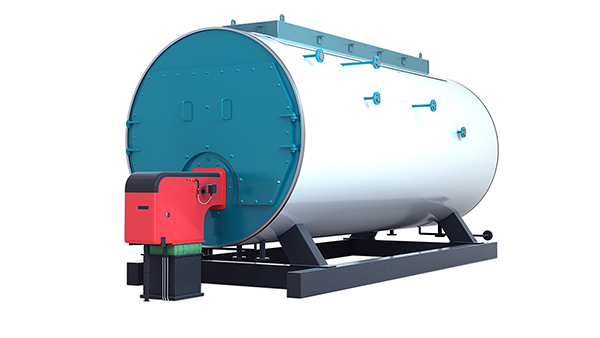
How Do Local Emission Regulations Affect Gas-Fired Boiler Design and Choice?
Many plant owners underestimate the impact of local emission regulations when selecting gas-fired boilers. The pain point comes when a boiler is purchased based on fuel efficiency alone, but later fails to meet stringent NOx, CO₂, or particulate limits, resulting in costly retrofits, penalties, or even operational shutdowns. The solution lies in carefully aligning boiler design, burner technology, and emission control systems with the environmental standards enforced by the plant’s operating region.
Local emission regulations directly influence gas-fired boiler design and choice by dictating allowable levels of pollutants such as NOx, CO₂, CO, and particulate matter. To comply, boiler manufacturers integrate low-NOx burners, flue gas recirculation, selective catalytic reduction (SCR), or condensing technology. The tighter the regional regulations, the more advanced (and costly) the required boiler and emission control package. Correctly selecting a boiler that meets both current and foreseeable future standards ensures long-term operational viability and prevents costly retrofits.
Compliance is not just about avoiding fines—it protects your investment, maintains community acceptance, and supports sustainability goals.
Gas-fired boilers emit negligible NOx and therefore do not require special low-NOx burners.False
Standard gas combustion produces significant NOx emissions; many regions mandate low-NOx burners or SCR systems for compliance.
Condensing gas-fired boilers help reduce both fuel consumption and CO₂ emissions.True
By recovering latent heat, condensing boilers increase efficiency and cut fuel use, leading to lower CO₂ output per unit of steam.
Key Emission Parameters Regulated
| Pollutant | Typical Limits (EU/US/Asia) | Boiler Impact |
|---|---|---|
| Nitrogen Oxides (NOx) | 30–80 mg/Nm³ (strict regions) | Requires low-NOx burners, staged combustion, FGR, or SCR |
| Carbon Dioxide (CO₂) | Linked to carbon taxes or cap-and-trade | Efficiency upgrades and potential hydrogen/natural gas blending |
| Carbon Monoxide (CO) | 50–100 mg/Nm³ | Demands precise air-fuel ratio controls |
| Particulates (PM) | 5–30 mg/Nm³ (gas is naturally low) | Minimal concern, but monitoring required |
| Sulfur Oxides (SO₂) | Gas generally negligible | Only relevant for high-sulfur LPG or biogas |
How Regulations Shape Boiler Design
1. NOx Compliance
Low-NOx Burners: Reduce flame temperature and stage combustion.
Flue Gas Recirculation (FGR): Recirculates cooled flue gas to lower combustion temperature.
SCR (Selective Catalytic Reduction): For ultra-low NOx zones (<10 ppm).
2. CO₂ Reduction
High-Efficiency Condensing Boilers: Reduce fuel use.
Carbon Capture Integration (pilot projects): For plants in regions with carbon pricing.
Hydrogen Co-Firing Capability: Future-proofing against stricter carbon rules.
3. Monitoring and Controls
Continuous Emissions Monitoring Systems (CEMS): Often legally mandated.
Advanced Combustion Controls: Maintain optimal air-fuel ratio to limit CO and NOx simultaneously.
Regional Examples of Impact
| Region | Regulatory Trend | Boiler Choice Impact |
|---|---|---|
| EU (Germany/Netherlands) | Ultra-low NOx (<30 mg/Nm³), strict CO₂ pricing | Requires condensing, SCR-ready designs |
| USA (California SCAQMD) | NOx limit 9 ppm (very strict) | Ultra-low NOx burners, FGR + SCR |
| China (Beijing, Shanghai) | Tightened NOx ≤ 30 mg/Nm³ for gas boilers | Mandatory low-NOx burners |
| Middle East | Moderate NOx limits, focus on fuel efficiency | Economizers + O₂ trim controls |
| Africa/SE Asia | Less stringent, but trending upward | Future-proofing recommended |
Case Study – District Heating in Northern Europe
A 40 MW district heating boiler installed in Denmark originally designed for 80 mg/Nm³ NOx was retrofitted with FGR and low-NOx burners to meet new 30 mg/Nm³ standards. Efficiency dropped slightly due to additional flue gas circulation, but operational compliance saved €500,000 annually in avoided carbon penalties.
Engineering Insights
Regulations drive CAPEX: A basic fire-tube boiler may cost $300k, but a fully compliant ultra-low NOx SCR-equipped system may exceed $1M.
Future-proofing is critical: Select boilers designed to accommodate upcoming NOx and CO₂ rules, especially in rapidly tightening markets.
Integration costs matter: Installing emission controls at design stage is 30–40% cheaper than retrofitting later.
Efficiency = compliance: Higher efficiency reduces CO₂ per MWh, aligning with carbon tax reductions.
Conclusion
Local emission regulations are a primary driver of gas-fired boiler design and choice. Operators must evaluate not only today’s compliance requirements but also anticipate future tightening of NOx and CO₂ limits. Choosing the right boiler technology upfront ensures compliance, avoids retrofits, and delivers long-term savings.
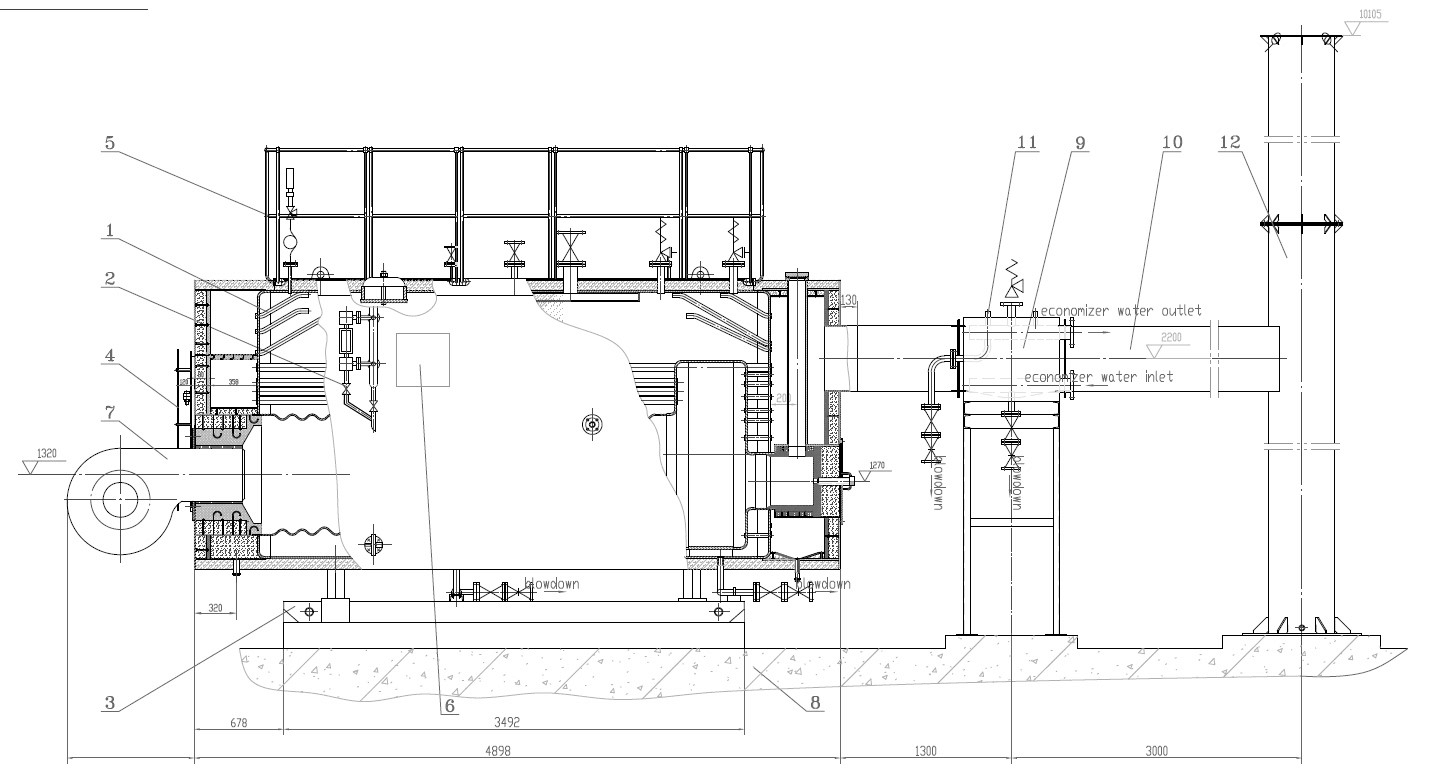
What Role Do Automation, Safety Systems, and Ease of Maintenance Play in Decision-Making?
When selecting a new boiler, many decision-makers focus primarily on fuel type, efficiency, and upfront cost. However, neglecting to evaluate automation, safety systems, and ease of maintenance can lead to higher operational risks, longer downtime, and greater lifetime costs. Boiler accidents, unplanned shutdowns, and inefficient manual operations are common pain points when these factors are ignored. The solution lies in choosing boilers with advanced automation, reliable safety interlocks, and designs that minimize maintenance complexity, ensuring both operational reliability and long-term cost-effectiveness.
Automation, safety systems, and ease of maintenance play a critical role in boiler decision-making because they directly affect operational efficiency, personnel safety, compliance, and lifecycle cost. Automated control systems optimize combustion and load response, safety systems prevent catastrophic failures, and maintenance-friendly designs reduce downtime and repair expenses. Decision-makers should prioritize these features alongside fuel and capacity considerations, as they significantly enhance reliability, ROI, and compliance with safety regulations.
In short, while fuel efficiency may save money, automation and safety save both lives and assets, and ease of maintenance ensures sustainability of operations.
Automation in boilers is primarily for convenience and has little impact on efficiency or safety.False
Automation significantly improves combustion control, reduces fuel waste, lowers emissions, and enhances operational safety.
Boiler designs with better accessibility reduce downtime and overall maintenance costs.True
Ease of maintenance shortens repair time, improves reliability, and extends boiler life, which lowers lifecycle costs.
Key Role of Automation in Decision-Making
Combustion Optimization: Digital controls maintain precise air-fuel ratio for maximum efficiency.
Load Tracking: Automated systems quickly adjust to fluctuating steam demands without manual intervention.
Remote Monitoring & IoT Integration: Real-time performance data prevents failures and enables predictive maintenance.
Labor Savings: Reduced need for constant manual supervision.
| Automation Feature | Benefit | Impact on ROI |
|---|---|---|
| Oxygen Trim Control | Higher efficiency, lower emissions | 1–3 year payback |
| PLC/DCS Integration | Centralized plant management | Increases uptime |
| IoT Predictive Analytics | Prevents unplanned shutdowns | ROI < 2 years |
| Remote Monitoring | Reduced staffing cost | OPEX savings |
Safety Systems as a Decisive Factor
Burner Management System (BMS): Controls startup, shutdown, flame detection.
Pressure Relief Valves & Interlocks: Prevent overpressure explosions.
Gas Leak Detection & Shutdown: Critical in gas-fired plants.
Compliance Requirement: Safety systems are legally mandated in most jurisdictions.
| Safety System | Function | Risk Reduced |
|---|---|---|
| Flame Safeguard | Shuts off fuel supply if flame fails | Explosion risk |
| High-Low Pressure Cut-offs | Prevents overpressure/underpressure | Catastrophic failure |
| Gas Leak Detection | Automatic shutdown in leaks | Fire/explosion hazard |
| Emergency Shutdown (ESD) | Stops boiler under abnormal conditions | Protects plant & staff |
Ease of Maintenance and Long-Term Value
Design Accessibility: Wide manholes, quick tube access, modular burners.
Predictive Maintenance Tools: Vibration sensors, corrosion monitoring, real-time analytics.
Spare Parts Availability: OEM support, standardized components lower downtime.
Service Interval Optimization: Longer service cycles reduce OPEX.
| Maintenance Factor | Impact | Decision Influence |
|---|---|---|
| Easy Tube Cleaning | Shorter downtime, better efficiency | High |
| Modular Burner Design | Quick replacement, reduced repair time | High |
| Spare Parts Readily Available | Ensures fast turnaround | Medium-High |
| OEM Service Contracts | Guarantees support and reliability | High |
Case Study – Food Industry Boiler Upgrade
A European food processing plant upgraded to a 20 TPH water-tube boiler with:
PLC automation with remote monitoring → reduced fuel consumption by 8%.
BMS with flame safeguard and gas leak detection → eliminated safety violations.
Modular maintenance design → cut annual downtime by 40 hours, saving €120,000/year.
This demonstrates how automation + safety + ease of maintenance directly improve ROI and compliance simultaneously.
Engineering Insights
Safety features should never be downgraded to cut costs—failure can be catastrophic.
Automation reduces both energy consumption and staffing requirements, providing dual savings.
Maintenance design is often overlooked in procurement, but it defines total lifecycle cost more than initial CAPEX.
Plants with limited skilled labor benefit most from highly automated and low-maintenance designs.
Conclusion
Automation, safety systems, and ease of maintenance are not secondary considerations—they are core decision factors in boiler procurement. They protect staff, ensure compliance, minimize downtime, and deliver long-term cost savings. A boiler that is fuel-efficient but unsafe or hard to maintain is never the right investment.
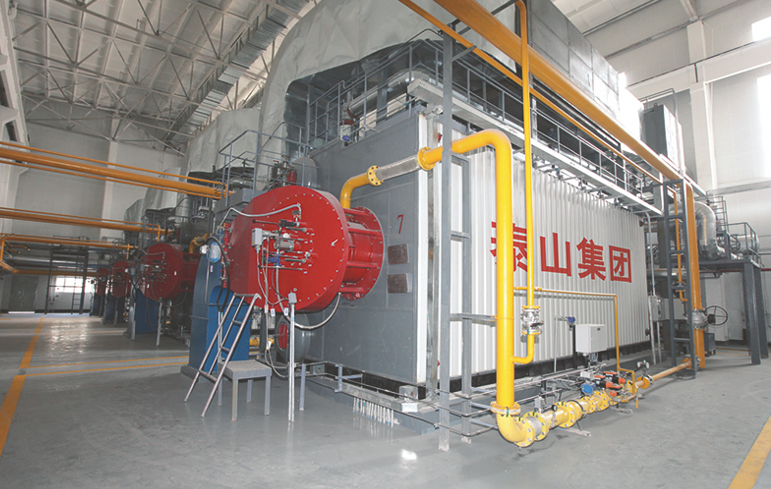
How Do Site-Specific Conditions (Installation Space, Altitude, Feedwater Quality) Impact Gas-Fired Boiler Performance?
When planning a gas-fired boiler project, many plant managers focus on capacity, fuel type, and efficiency but overlook the impact of site-specific conditions. Problems arise when a boiler that performs well on paper under standard conditions fails in real-world operations due to limited installation space, reduced oxygen at high altitudes, or poor feedwater quality. These challenges can cause derated capacity, increased fuel consumption, shorter equipment life, or even premature boiler failure. The solution lies in carefully assessing the physical site conditions, local environment, and water supply characteristics before selecting and configuring a gas-fired boiler.
Site-specific conditions directly impact gas-fired boiler performance by influencing efficiency, safety, and service life. Limited installation space may restrict boiler type and ancillary equipment, altitude affects combustion due to lower oxygen availability, and feedwater quality determines scaling, corrosion, and maintenance needs. Correctly matching boiler design to these conditions ensures reliable operation, compliance, and optimized lifecycle cost.
In other words, a boiler that ignores site-specific realities may never achieve its rated efficiency or expected lifespan.
Boilers always deliver their rated capacity regardless of installation altitude.False
At higher altitudes, lower air density reduces available oxygen, requiring derating or combustion system modification.
Poor feedwater quality is one of the most common causes of boiler tube failures.True
Impurities cause scaling, corrosion, and overheating, leading to tube ruptures and costly repairs.
1. Installation Space Constraints
Challenge: In industrial plants, boiler houses or mechanical rooms often have limited space.
Impact: This restricts selection between fire-tube vs. water-tube, economizer installation, or advanced emission controls.
Engineering Considerations:
Compact Boilers (vertical fire-tube, modular units) fit small footprints but with lower capacities.
CFD and 3D Layout Planning optimize auxiliary equipment (pumps, economizers, gas trains).
Maintenance Access: Poor accessibility increases service downtime and costs.
| Boiler Type | Space Requirement | Best Fit |
|---|---|---|
| Fire-Tube | Large footprint | Low/medium capacity, easy service |
| Water-Tube | Taller but more compact per output | High capacity plants |
| Modular Package | Very compact | Space-limited retrofits |
2. Altitude Effects on Performance
Challenge: Air density decreases with altitude, reducing oxygen available for combustion.
Impact: Boilers at >1000 m elevation may suffer derated capacity and efficiency losses.
Typical Derating Rule: Efficiency drops ~1–2% per 300 m above 1000 m if unmodified.
Engineering Solutions:
Forced Draft Fans: Ensure adequate combustion air.
Oxygen Trim Controls: Adjust fuel-air ratio automatically.
Burner Re-sizing: To restore proper flame stability.
| Altitude (m) | Air Density Reduction vs. Sea Level | Boiler Output Impact |
|---|---|---|
| 0 | 100% | Rated capacity |
| 1000 | ~89% | -5–10% derating |
| 2000 | ~78% | -15–20% derating |
| 3000 | ~70% | -25–30% derating |
3. Feedwater Quality and Boiler Life
Challenge: Natural water sources vary in hardness, silica content, dissolved gases, and contaminants.
Impact: Poor feedwater treatment leads to scaling, corrosion, pitting, and tube rupture.
Standards: Most OEMs require water to meet ASME or EN boiler water quality guidelines.
Engineering Solutions:
Deaerators: Remove O₂ and CO₂ to prevent corrosion.
Softening/RO Systems: Control hardness and TDS.
Chemical Dosing: Adjust pH, oxygen scavengers.
| Feedwater Issue | Effect on Boiler | Preventive Solution |
|---|---|---|
| Hardness (Ca, Mg) | Scaling → overheating | Softener/RO system |
| Silica | Turbine deposits, glassy scale | RO or ion exchange |
| Oxygen/CO₂ | Pitting & corrosion | Deaerator + scavengers |
| High TDS | Foaming, carryover | Blowdown + RO system |
Case Study – Brewery Plant in South America
A 15 TPH gas-fired water-tube boiler installed at 2500 m elevation initially failed to reach design steam output. Engineering review showed oxygen deficiency at altitude. Solution: upgraded forced draft fan + oxygen trim system, restoring output to 95% of rated. Additionally, feedwater silica levels above standard were corrected with RO + chemical treatment, reducing tube fouling and extending cleaning intervals from 4 months to 12 months.
Engineering Insights
Space-limited sites often require modular boilers, but planning for service access is equally important.
Altitude derating is unavoidable without design modification—always check manufacturer altitude curves.
Feedwater quality is the hidden killer of boilers—investing in treatment is far cheaper than tube replacement.
Integrated solutions (automation + water treatment + layout design) provide the highest ROI.
Conclusion
Site-specific conditions—installation space, altitude, and feedwater quality—are decisive in ensuring gas-fired boiler performance, efficiency, and longevity. Overlooking them leads to derated output, higher operating costs, and premature failures. The smartest investment is not just in the boiler itself, but in designing a system that matches your site environment.
🔍 Conclusion
Choosing the right industrial gas-fired steam boiler involves more than capacity—it requires aligning technical requirements, fuel characteristics, and environmental compliance. A well-matched boiler ensures efficient fuel use, reliable steam supply, and long-term operational savings.
📞 Contact Us
💡 Looking for the best gas-fired steam boiler for your facility? We provide engineering consultation, system design, and turnkey supply to ensure you get the optimal boiler for your operations.
🔹 Contact us today for a tailored gas-fired steam boiler solution that maximizes efficiency and reliability. 🔥💨🏭✅
FAQ
How do I choose the right industrial gas-fired steam boiler?
Selecting the right boiler involves evaluating steam capacity, pressure, efficiency, fuel cost, and environmental compliance. Consider:
Steam output (kg/h or t/h) – Match to actual process demand.
Operating pressure – Food, textile, and pharma industries need low-to-medium pressure; chemical and power industries require high pressure.
Efficiency – Modern gas-fired boilers can reach 90–95% with condensing technology.
Space constraints – Fire-tube boilers are compact, water-tube boilers handle higher loads.
Emission standards – Ensure compliance with NOx and CO₂ regulations.
What capacity gas-fired steam boiler should I select?
Capacity depends on your steam load profile:
Small industries (laundries, food processing, beverage): 500 kg/h – 10 t/h
Medium industries (textiles, chemicals, breweries): 10–40 t/h
Large industrial users & utilities: 40–150+ t/h
Oversizing leads to energy waste; undersizing risks downtime. A steam demand analysis is recommended before purchase.
How efficient are gas-fired steam boilers compared to other types?
Gas-fired boilers are among the most efficient:
Standard fire-tube boilers: 80–85%
Water-tube boilers: 85–90%
Condensing boilers: 90–95% (capture latent heat from flue gases)
Compared to coal or oil, gas boilers are cleaner, require less maintenance, and reduce operating costs in the long term.
What fuel considerations are important for gas-fired steam boilers?
Key factors include:
Natural gas availability – Ensure pipeline access or bulk storage.
Gas cost stability – More predictable than oil but varies by region.
Alternative fuels – Some boilers support dual-fuel operation (gas + oil) for flexibility.
Regulatory compliance – Gas boilers emit less SO₂ and particulates than coal, aiding compliance with air quality laws.
What industries benefit most from gas-fired steam boilers?
Gas-fired boilers are ideal for industries needing clean, reliable, and cost-effective steam, such as:
Food & beverage processing – Clean steam for sterilization.
Pharmaceuticals – Precise pressure and purity requirements.
Textiles & laundries – High steam consumption with lower emissions.
Chemicals & refining – Reliable high-pressure steam for process operations.
References
DOE – Natural Gas-Fired Boiler Efficiency Standards – https://www.energy.gov
ASME – Gas Boiler Design and Operation – https://www.asme.org
Spirax Sarco – Selecting the Right Gas Boiler – https://www.spiraxsarco.com
Forbes Marshall – Gas vs. Oil Boiler Comparison – https://www.forbesmarshall.com
Babcock & Wilcox – Industrial Gas-Fired Boiler Applications – https://www.babcock.com
IEA – Natural Gas in Industrial Energy Systems – https://www.iea.org
Engineering Toolbox – Steam Boiler Sizing Methods – https://www.engineeringtoolbox.com
ScienceDirect – Boiler Efficiency Studies – https://www.sciencedirect.com
BioEnergy Consult – Fuel Choices in Industrial Boilers – https://www.bioenergyconsult.com
ResearchGate – Gas-Fired Boiler Performance Optimization – https://www.researchgate.net

